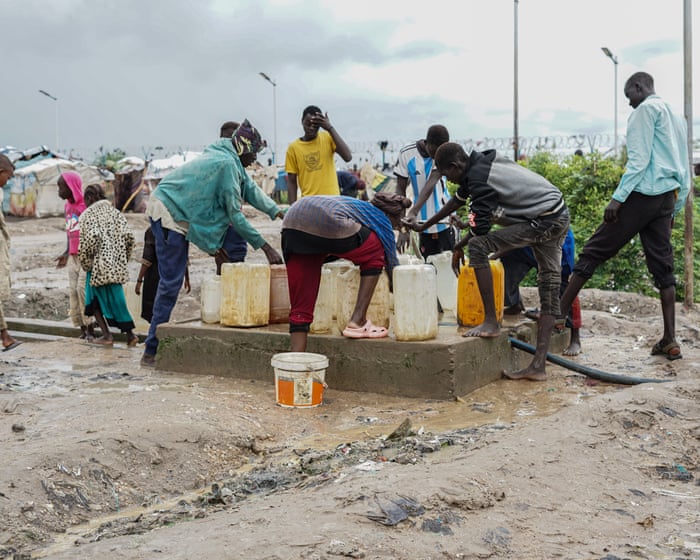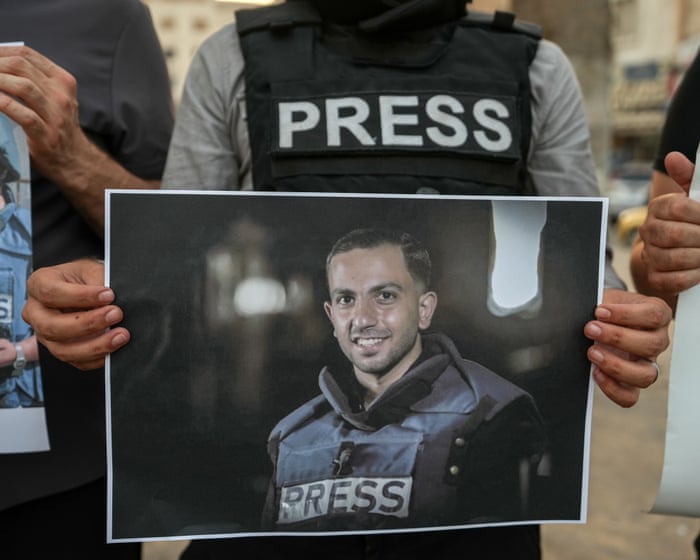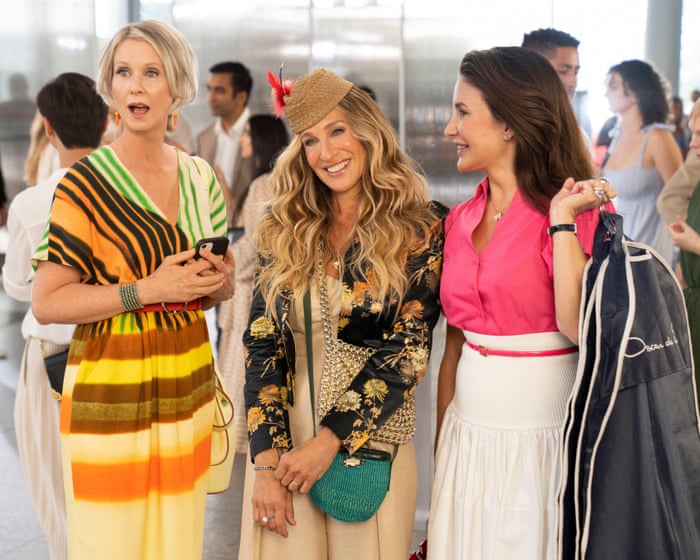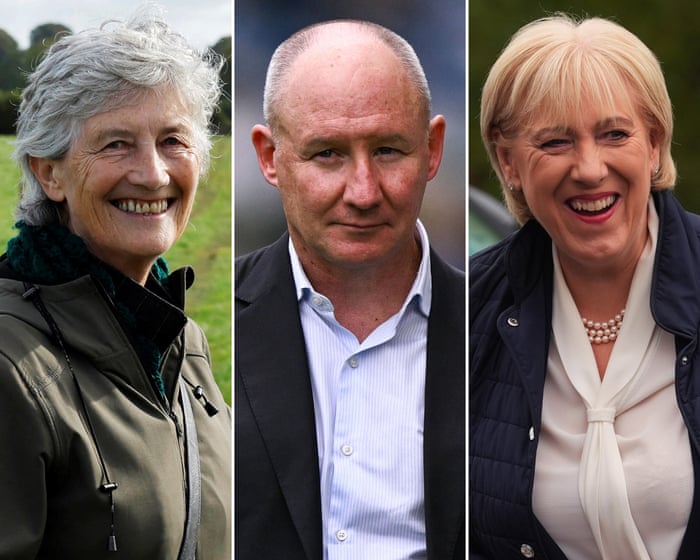Thousands of South Sudanese who fled war-torn Sudan are now stranded in a border town after aid cuts halted their journeys home. Since the conflict in Sudan erupted in April 2023, over 800,000 South Sudanese living there have been forced to return to their homeland.
Most entered through the northern border town of Renk, where humanitarian groups provided temporary assistance at a transit center. The International Organization for Migration (IOM) and the government had been helping them travel onward, but in June, the UN agency suspended the program due to funding shortages. This left thousands stuck with little access to essential services.
The suspension resulted from the Trump administration’s freeze on foreign aid for programs funded through the State Department, except those providing life-saving humanitarian assistance.
Musa Rajab, a 66-year-old who arrived at the center with his family in June from El-Gadarif in southeastern Sudan, expressed his despair: “I feel broken because the organizations stopped the travel. Life here is hard because if you don’t have money, you face difficulties.”
Rajab is among more than 9,000 people sheltering at the Renk transit center after escaping the violent conflict between the Sudanese Armed Forces and the paramilitary Rapid Support Forces, along with their allied militias.
Most at the camp are South Sudanese returnees. Some had originally gone to Sudan to escape South Sudan’s civil war that began in 2013, while others sought better opportunities in what was once a more prosperous neighbor.
The fighting in Sudan has triggered what the UN calls one of the worst humanitarian crises of the 21st century, with over 150,000 killed, more than 14 million displaced, and countless others in need of aid.
Renk, situated on the eastern bank of the White Nile, has become a critical transit point for those fleeing the war but is now a bottleneck. When funding stopped, it created a backlog of people unable to continue their journeys.
Through its transit program, the IOM had been moving people from the center to strategic towns via barges and planes, then on to their final destinations. From May 2023 to mid-2025, the organization assisted over 250,000 people.
The aid suspension has worsened the humanitarian situation in Renk and underscored the challenges faced by international groups following foreign aid cuts.
Vijaya Souri, IOM’s chief of mission in South Sudan, warns that funding gaps have restricted access to food, water, and healthcare. “Each delay not only increases vulnerability but also puts lives at risk and erodes the dignity of displaced people already enduring unimaginable hardships,” she says. “We urge governments and the international community to act swiftly to support these transport services so displaced families are not left stranded and exposed.”
The transit center is now holding three times its intended capacity. Refugees and returnees, many traumatized by their experiences in Sudan, are struggling with inadequate food, water, and shelter. With more people crossing the border daily, the situation could deteriorate further.
“The number is increasing,” says Vladimir Mitkovski, IOM operations officer in Renk.All sectors are affected and overstretched. In early September, the IOM used funding from the UK Foreign Office to transport 915 people out of Renk. Deng Ajack, deputy director of the government’s Relief and Rehabilitation Commission, mentioned that discussions are underway to allocate more land to ease overcrowding.
At the center, children gathered around water points with jerrycans, while men and women waited outside a metal building for food distribution. Women fried and sold dough cakes to other displaced people. During the rainy season, large pools of water flooded the grounds, leaving many in urgent need of waterproof materials for shelter.
Musa, originally from Abyei in the north, went to Khartoum in 2019 for medical treatment and later worked in El-Gadarif as a trainer and machine operator at an agricultural company. He survived two years of war in the town, which was occasionally targeted by RSF drone attacks, and left when the state government organized a return trip for South Sudanese nationals. He traveled with his wife, their five children, and his wife’s sister’s three children.
Upon arriving at the transit center, he received 49,000 South Sudanese pounds (about £7) in cash assistance. However, he had to spend some of it on a tarpaulin to build a shelter for his wife and children, while he sleeps in a public facility. “The situation here is bad,” he says. “Every time I hear they will provide us with things, but nothing has reached me.” Musa adds, “Our goal is to travel. We do not wish to stay here.”
Others, like 48-year-old Alel Agoth, also from Abyei, have had to sell their belongings to support their families. She and others pooled money to rent a van from El-Gadarif, where she had fled from Omdurman when the war began. The van only took them as far as Renk. She left her son behind, recovering from gunshot wounds sustained when the SAF entered Khartoum.
At the center, she received cash assistance upon arrival but no further aid. She resorted to selling some of her clothes and bedsheets to buy food. “We sell our clothes to provide for our children and ourselves because I have no relatives here,” she says. “If God gives us a chance to travel, we will not hesitate to go.”
South Sudan is struggling from years of conflict, resource looting, and natural disasters. Many in the camp realize they have returned to a country facing a different kind of crisis. Tut Dador, 32, left Bentiu city in the north for Omdurman in 2019 after flooding submerged entire villages, and he worked in construction. He hopes to return to Bentiu.Devastating floods. Photograph: Carlos Mureithi/The Guardian
He is in Renk with his wife and their five children, eager to return to Bentiu. There, they plan to settle in a camp for those displaced within the country.
“Bentiu is my home. I’ll follow the lead of others there, and I’m confident I can make a life for myself,” says Dador. “Although many things are missing, we’ll adjust and get by.”
Frequently Asked Questions
Of course Here is a list of FAQs about the situation described in I feel broken Thousands of South Sudanese are stranded unable to return home and facing severe hardship
BeginnerLevel Questions Understanding the Basics
1 What does it mean that South Sudanese are stranded
It means they are stuck in a foreign country and cannot safely or practically return to their homes in South Sudan
2 Why cant they just go back home
The main reasons are ongoing conflict extreme poverty and a lack of basic services like food clean water and healthcare in South Sudan The journey itself is also often dangerous and expensive
3 What kind of severe hardship are they facing
They often live in overcrowded camps or urban slums with little food unsafe water and no steady work They face hunger disease and the constant stress of being displaced and uncertain about the future
4 Who are these stranded people
They are a mix of refugees who fled earlier wars people who were working abroad and families who became trapped when conflict erupted separating them from their homes
5 Is anyone helping them
Yes organizations like the UN Refugee Agency the Red Cross and various charities provide food shelter and medical care However resources are often stretched thin and cannot meet everyones needs
AdvancedLevel Questions Deeper Causes and Complexities
6 What are the root causes of this crisis
The primary cause is the prolonged civil war and political instability within South Sudan which has destroyed the economy and public services making the country unable to support its returning citizens
7 How does the situation in neighboring countries like Sudan affect them
Many were stranded in Sudan but the recent conflict there has made their situation even worse forcing them to flee again to a second country or trapping them in a war zone with no way out
8 What is the difference between a refugee and an internally displaced person in this context
A refugee has crossed an international border An Internally Displaced Person is still within their own country The stranded group often includes




